The GMU Wiki : https://www.uni-weimar.de/kunst-und-gestaltung/wiki/GMU:Critical_VR_Lab_II
Inspiration from Radiance VR
Curious about the Post-Internet style of 'badgrandpa'
Seeing Evelyn's VR experience in full length at Alison Milne exhibitions is also very eye-opening, because the project seemed so impressive but two things strike me:
1) Hardly any 3D models where created, instead a lot of cut outs from her photographs which are obviously flat cut-outs + simple shapes
2) good use of texture and light
3) the SPACES work the best - meaning when the space from the photograph is turned into an environment
4) Evelyn's voice adds a lot to hold the scenes together - to create transitions, to give context and explanation and narrative that guides the viewer's understanding
5) translation of the visual to VR feels a bit clumsy and partially unoriginal to me; like scaling one image behind a window of a textured wall? Or dragging out the photograph into lines that extend into float floating space
6) Disregarding any rules of non-nausea inducing conduct e.i. viewer is lifted and moved without orientation and flies downwards and around
Create Photogrammetry videos - 3D models of people speaking- almost like a bad hologram
Create Photogrammetry from videos
Li Alin - artists who connects VR and performance - also an installation similar to my work in the making sense research to trigger visuals inside viewers brain through light impulses, in her case for lucid dreaming.
If you want to have the Oculus GO - you have to make a concept outline by Friday!
Traits of the Oculus Go : 'making it capable of seated or static-standing activities but unsuitable for room-scale applications.'
After spending last semester getting to know Unity almost exclusively through my flat laptop screen I want to familiarise myself more fully with the digital 360° environment.
A big advantage of using the GO would be to immediately and physically deal with the device and the things I create by actually stepping inside as opposed to only imagining what it will be like. I want to use this semester to continue exploring what storytelling in immersive space can mean, as part of an overall research into the narrative forms and user journey, which work (or don't work) specifically in VR.
I would like to test various styles and design elements. As an umbrella-format I am currently inspired by an early computer game of my childhood called 'Klopf an' - a picture-book style, eery feeling children's learning game in which you move from room to room, each room having a strong own atmosphere that I vividly remember to this day. Each space might 'test' different ways of using VR - a 360° image (inspired by aesthetics of: https://www.radiancevr.co/artists/sandrine-deumier/) , a 360° video, a room to explore, an animated character to follow behind, a surrealistic space, a space that tries to closely mimic reality, a space that is comprised only of objects drawn by me (inspired by aesthetics of: https://www.radiancevr.co/artists/patricia-detmering/).
I could also imagine an extension of the photogrammetry project I did last semester in connection with Pure Data. The project resulted in 4 digital gardens - as 360° images - drawing inspiration from traditional Japanese rock garden aesthetics and philosophy. Subsequently, I have over 30 scanned rock models, which I would be curious to connect with sound programmed from Pure Data in an interactive virtual space.
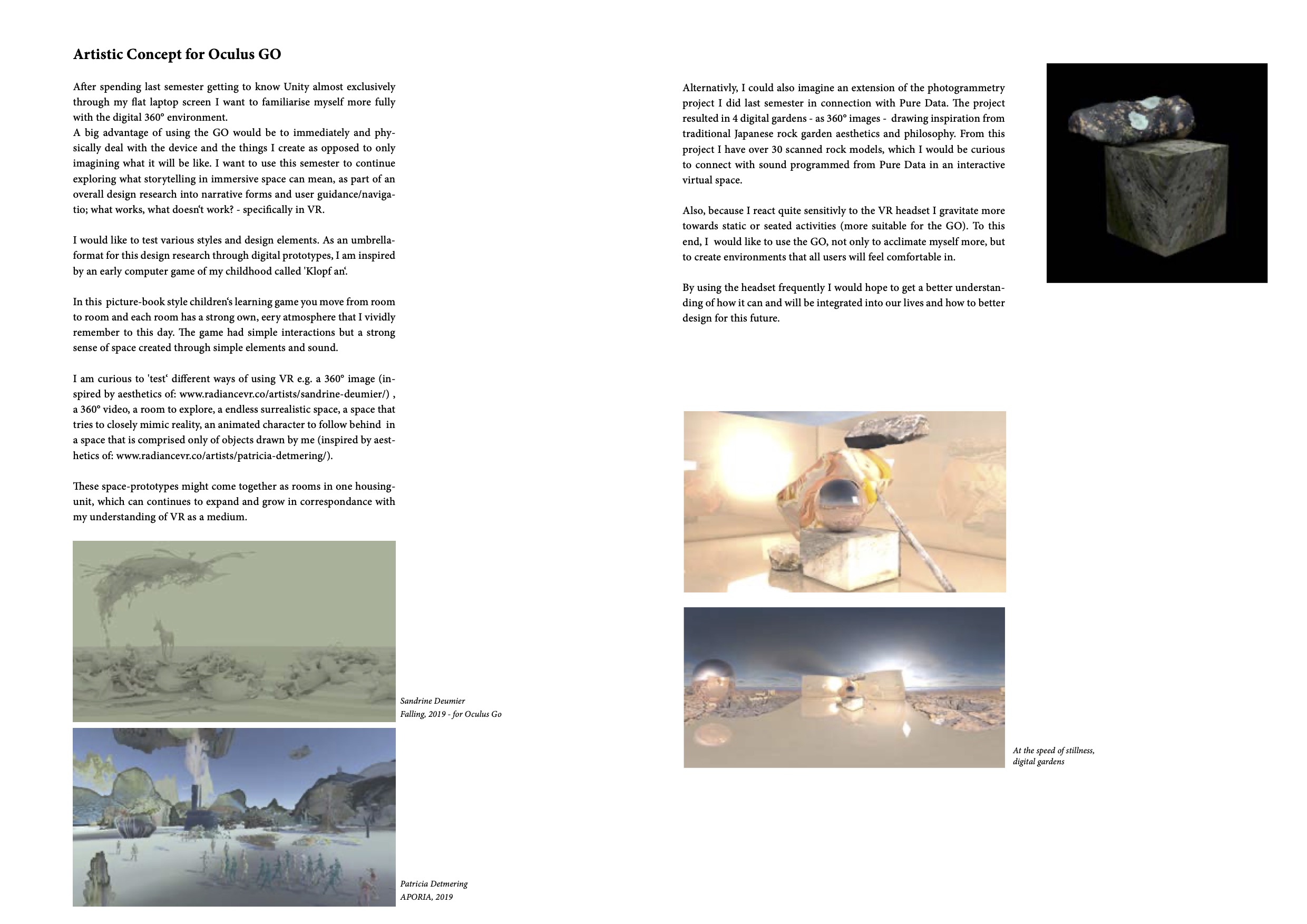
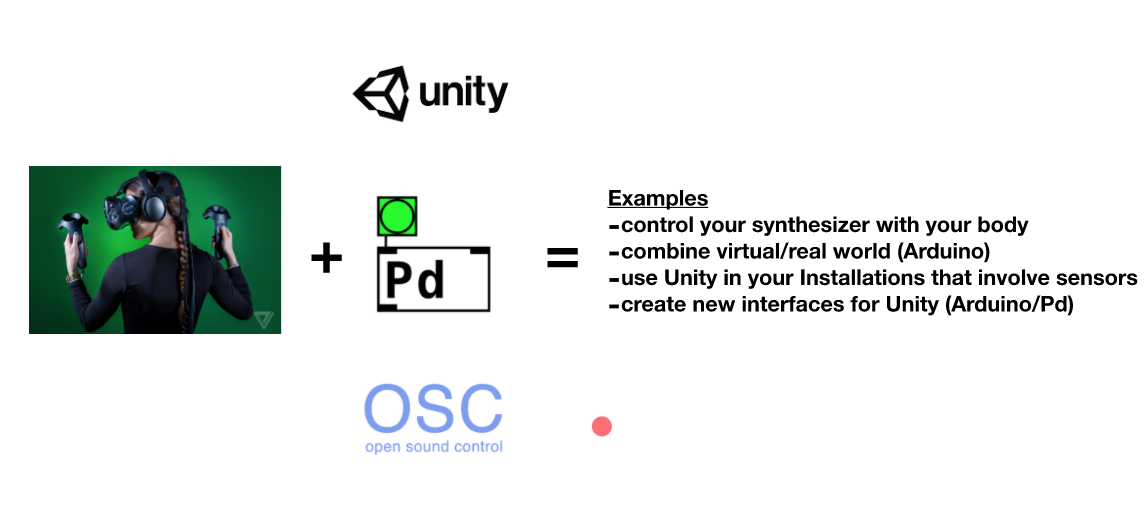
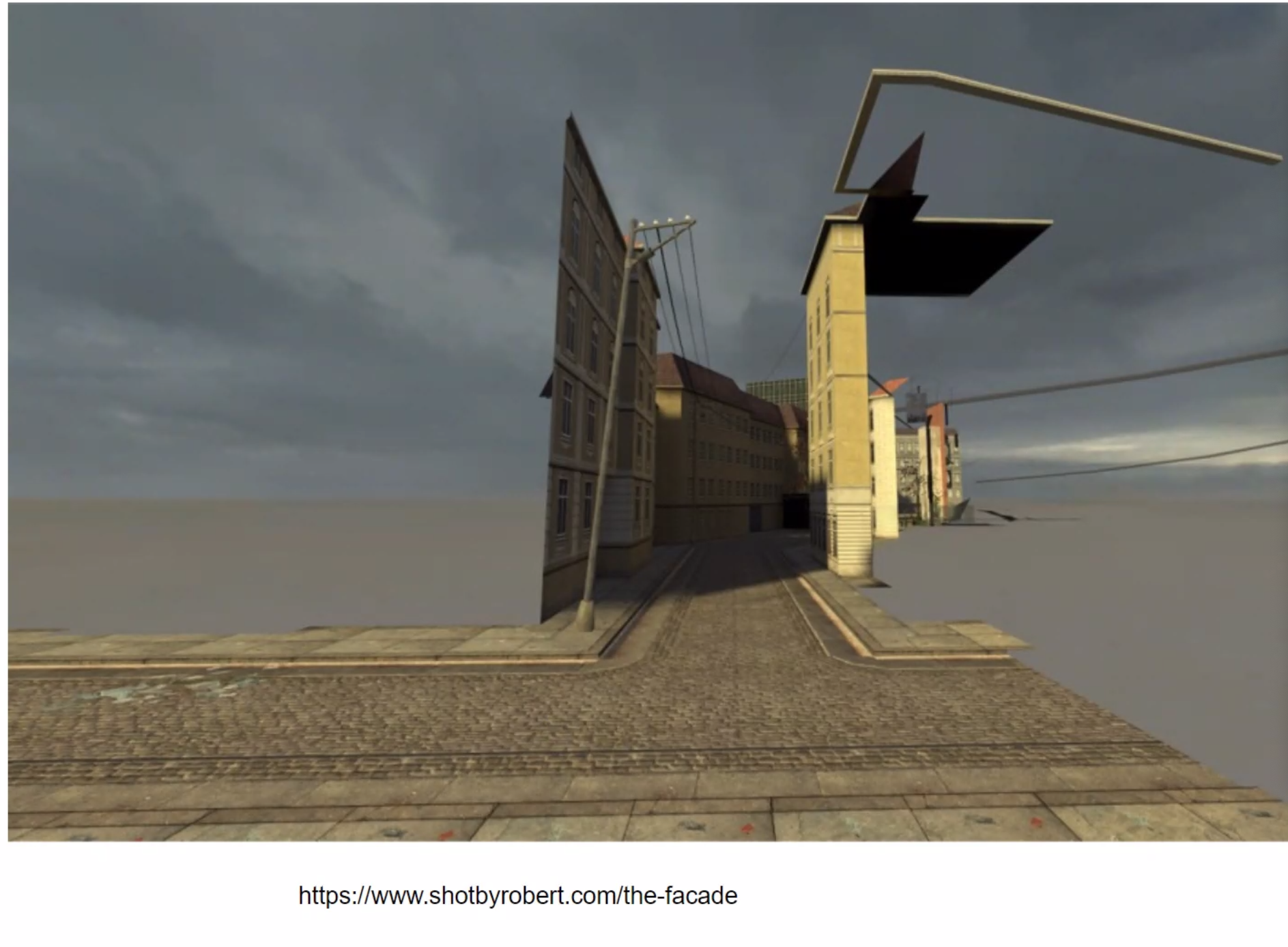
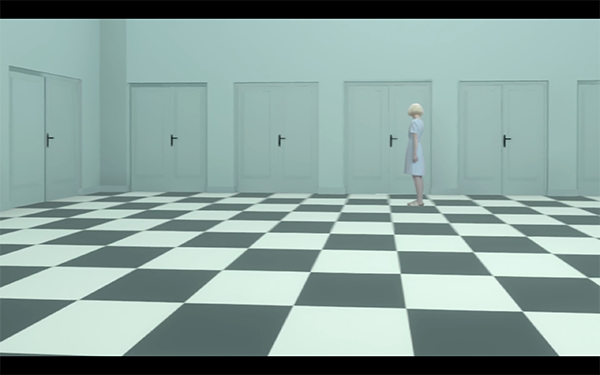
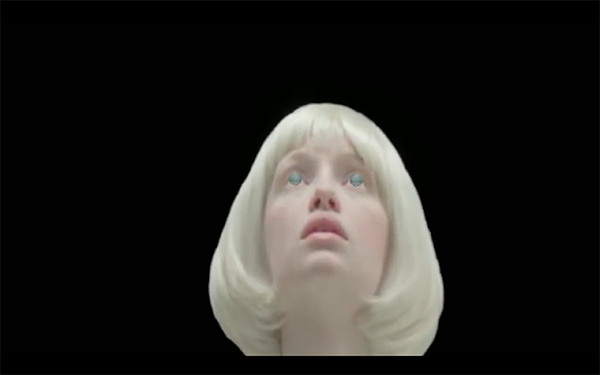
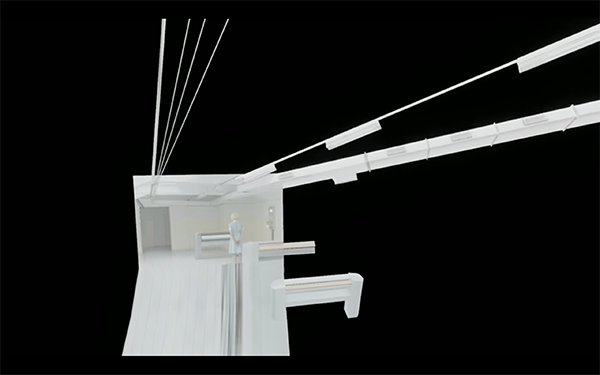
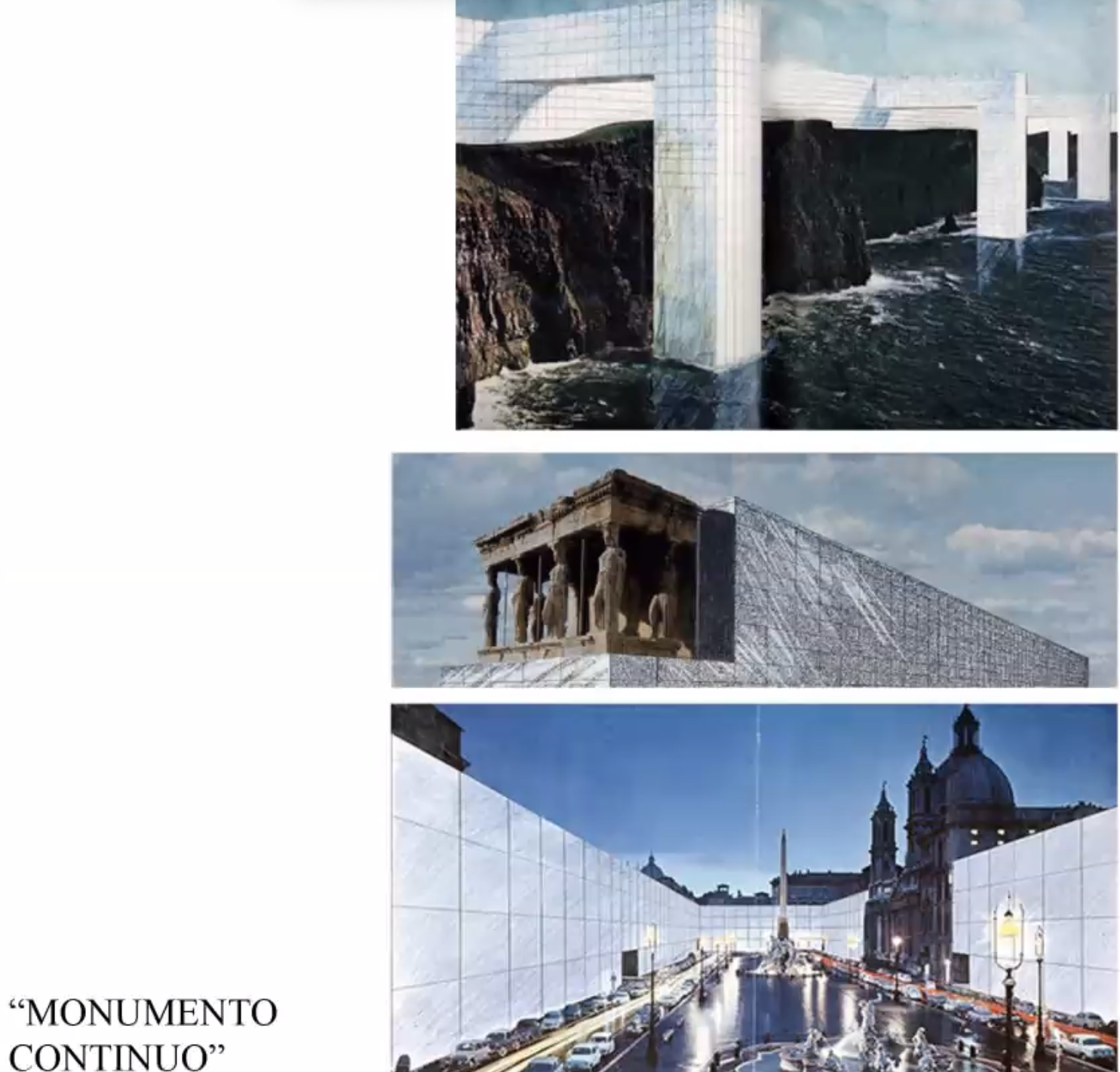
Taking something analogue and placing it in VR - a construction or people or a performance ..
> Niké Huiberts , INCUBUS - film on Glamcult
performance in steril space
As done in newscenario exhibition for VR
Example with Pure Data: Data from real life can go into the virtual - performer movement to control a theremin ; balls connected to synthesiser levels in PD get controlled by ball height > movement interaction with sound > BODY CONTROLS SYNTHESIZER THROUGH UNITY
However, Oculus Go works with android system so it doesn't connect to LibPD
Creates procedural sound - synthesised so no audio files - meaning more interaction and excitement in how things are generated and react to the user.
CONSULTATION THIS FRIDAY 22.05 - 17:30 - 18:00
Option to start looking into Pure Data : PDVanilla 0.50 - 2
Focus this semester: learning texture and lighting + practical set-ups like scene change
Idea of other student: play with illusions 2D -§D between the realms - illusion art > let viewer find new perspectives - reminds me of the space collages I saw in tel aviv which realigned by walking through the space - but this couldn't be done on the Go.
One 'quick' approach to working with this might be to download free scenes from the asset store - so I don't need to build from scratch and alter light and hand painted textures from that angle.
Notes from Consultation (1)
Look at Shadergraph > get a feel for material, different textures, movements and light
reminder: update method is called every frame so don't put a scene change there
Oculus Go has no position tracking
But beyond knowing the limitations of a device it's not important when you start to design or build your project what device it is for - this can be done in final step
Normalmaps generator on GMU: toolbox link
Post-processing - reflections - shader - 'bloom' aura effect
Youtube- 'Unity light demo'
Solution to my loadscene problem:
1) add a plane to entire view field of FPS controller (make sure collider is off)
2) animate it to fade white with timeline
3) add simplest loadscene script with scene manager to an empty gameobject, deactivate the game object in the inspector and add it to the end of your scene in the timeline through an activation track // empty gameobject with script on it activated via timeline
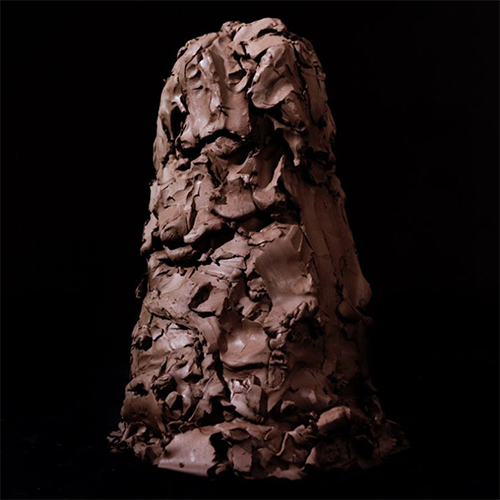
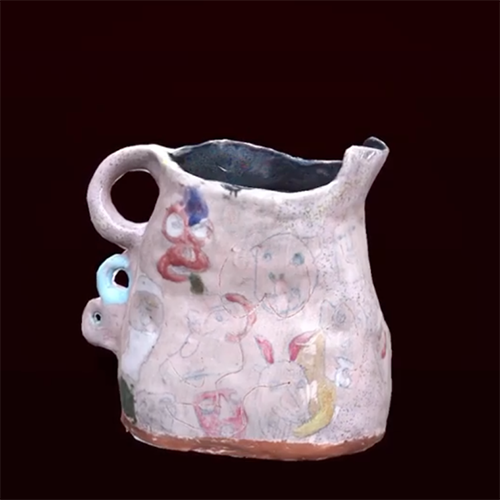
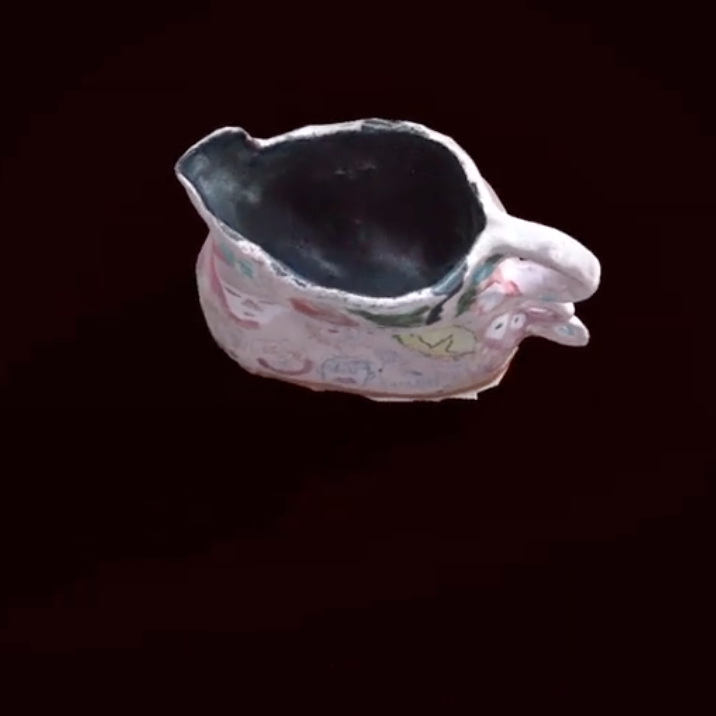
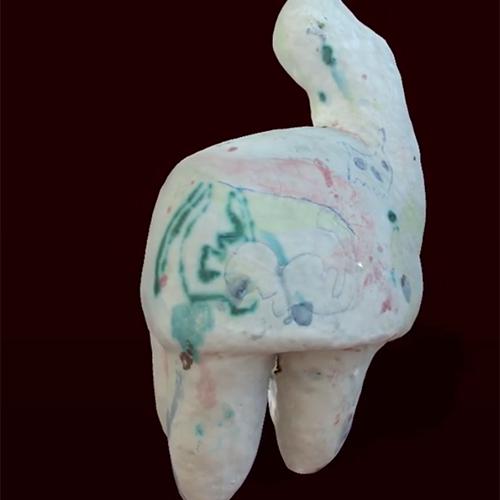

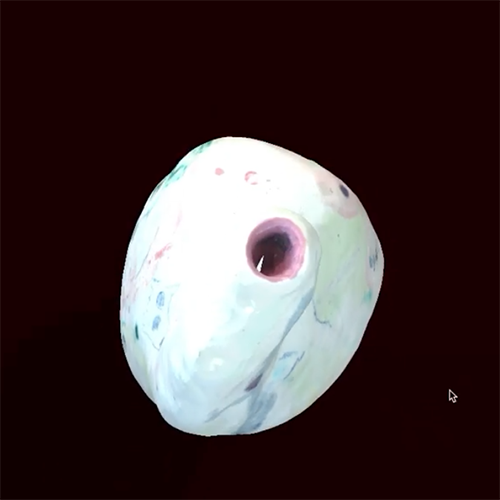
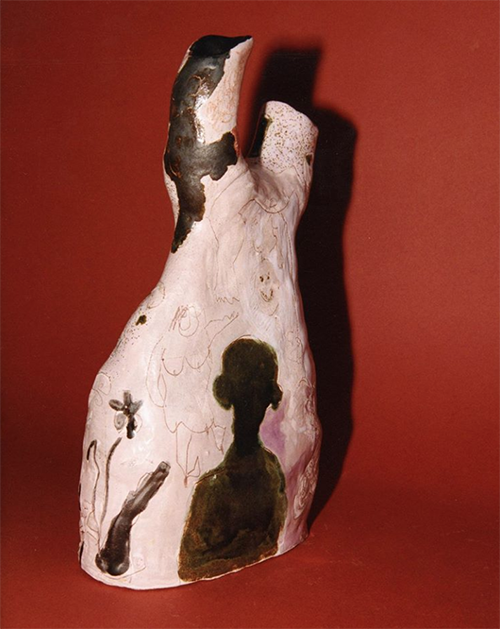
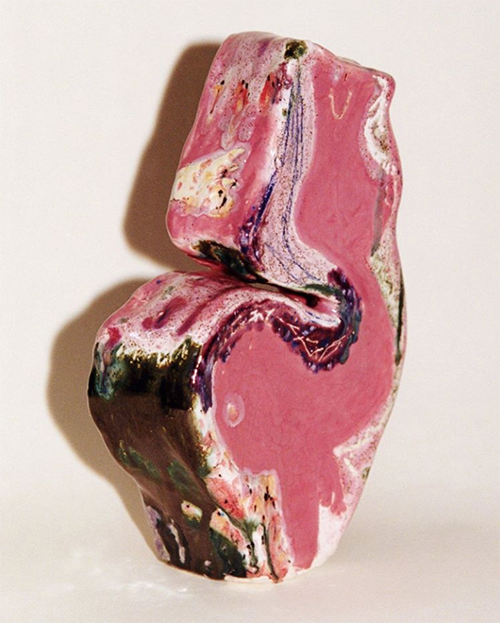
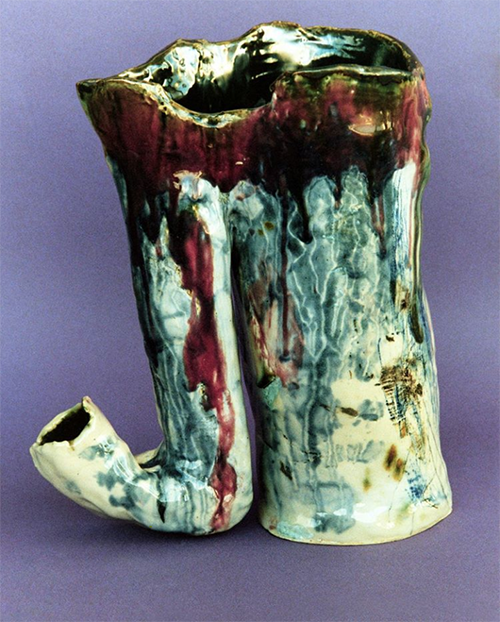
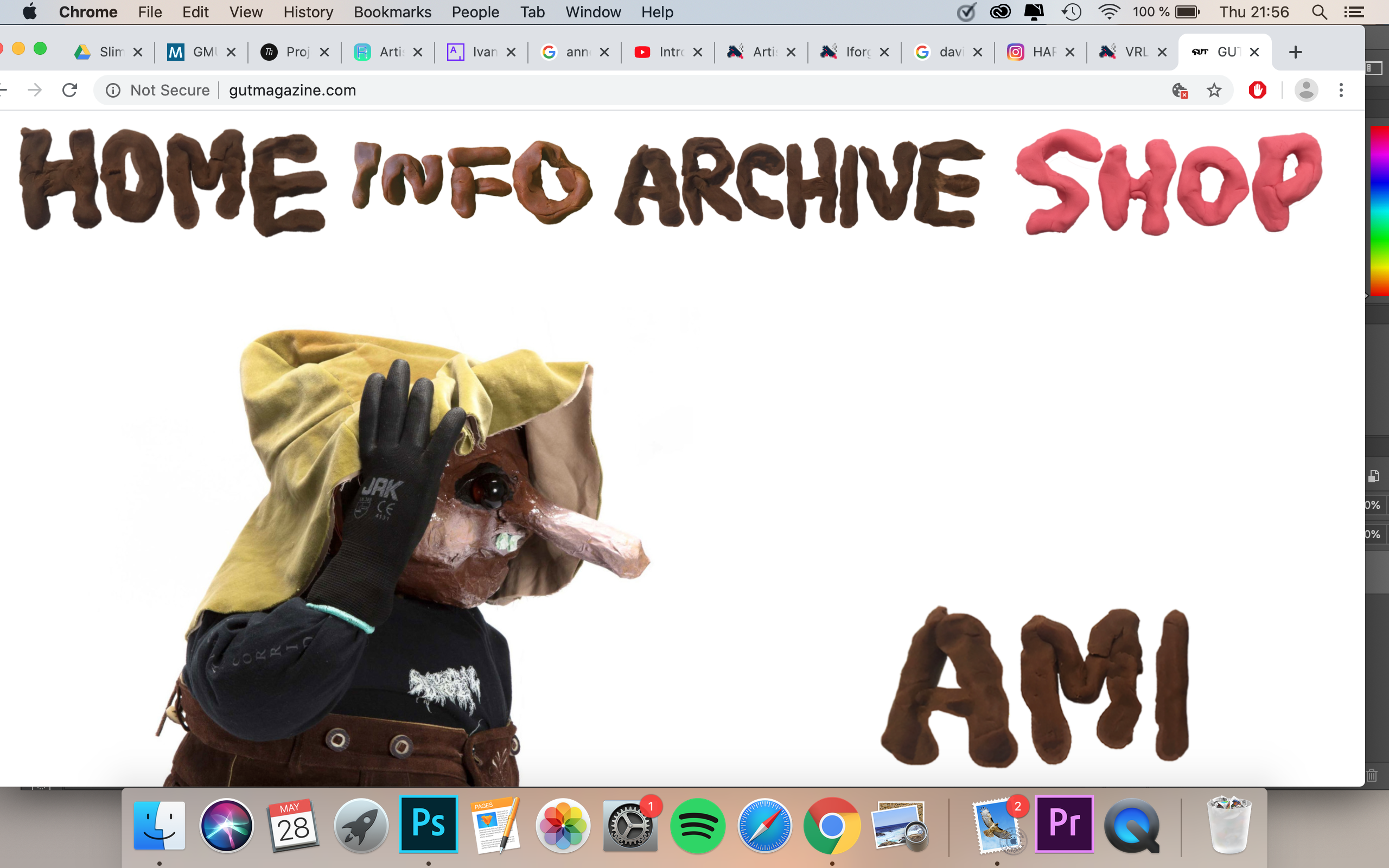
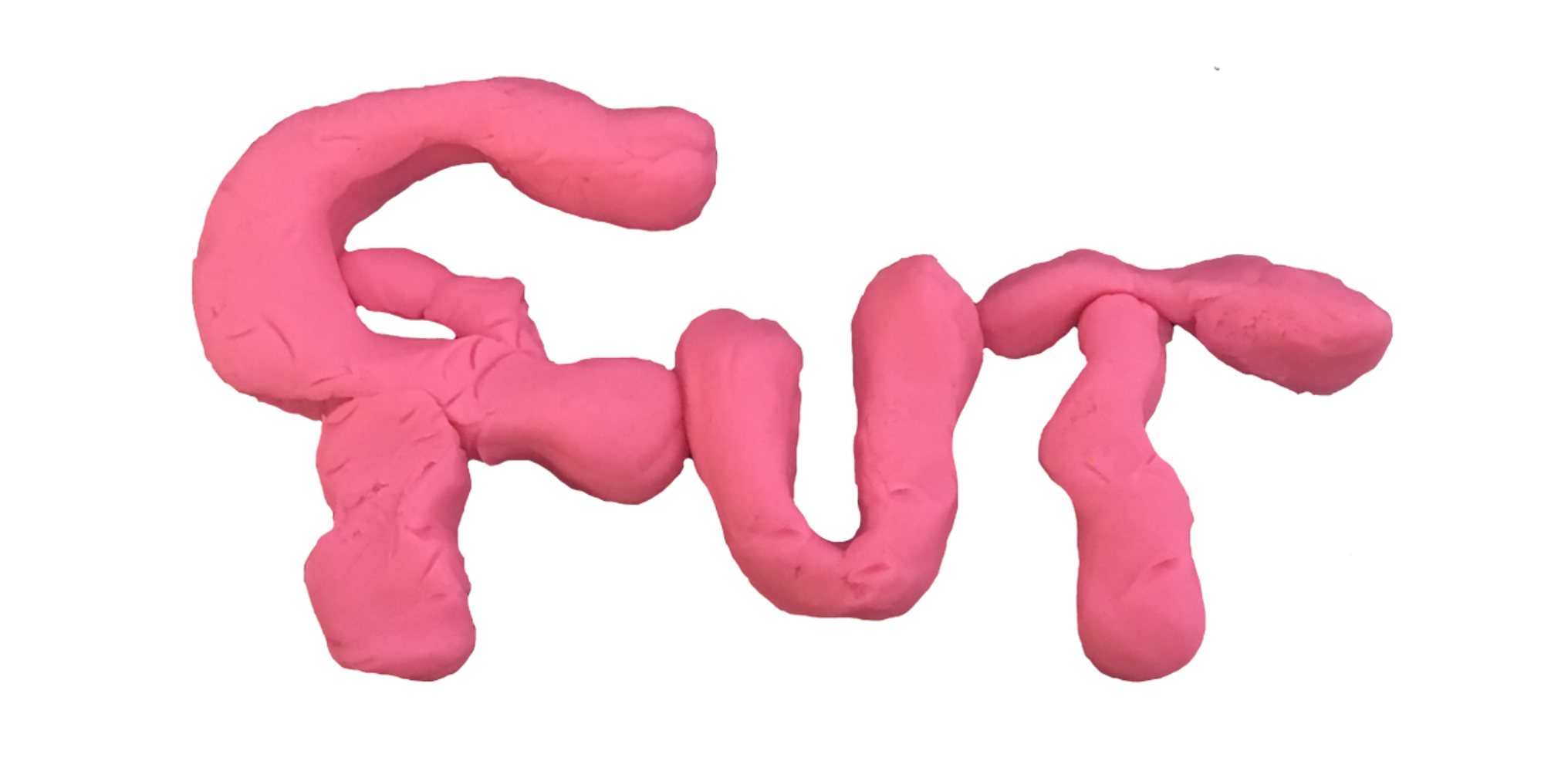
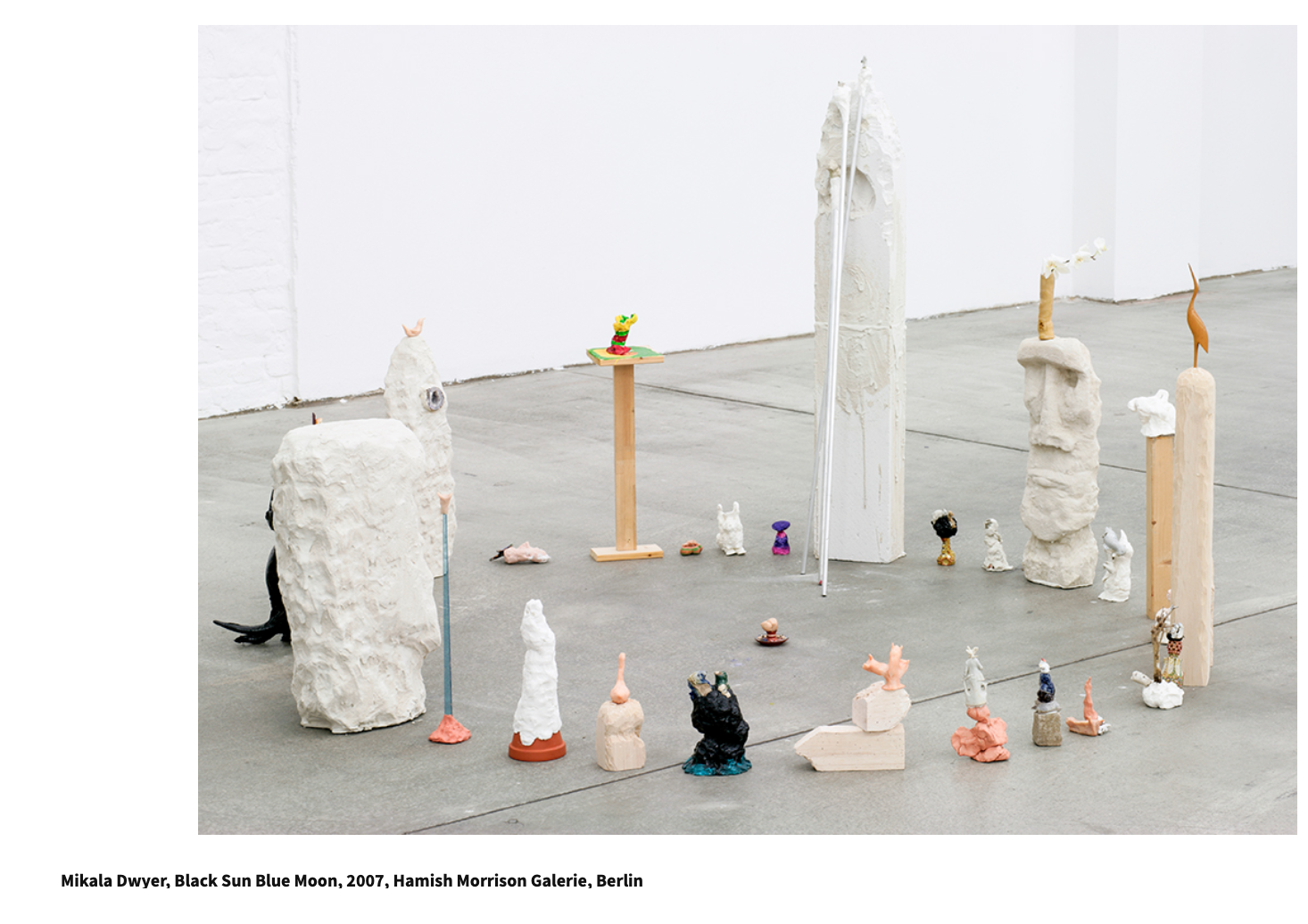
3D printed objects and interesting shapes by Tim Söderstrom - source: https://www.sightunseen.com/2017/12/wang-soderstrom-3d-printed-objects/
This circle of objects has somehow a ritual, spiritual 'Hexenkreis' connotation
+ Reminds me of several projects I saw on Radiance VR - that resonated with me- in which the virtual space was built up around the viewer - who himself was fixed to the centre of the situation.
+ What would be especially nice is to have the installation also physical somehow - imagine the circle of actual objects with the VR headset coming down in the middle
Ceramics - 3D tangible objects
Collage
Watercolours + crayon
+ possibility to link to PD ?!
PD intro: https://www.youtube.com/watch?v=VdRDePUdwwA
Part 3: https://www.youtube.com/watch?v=6q9WanUlUEk
Part 2: https://www.youtube.com/watch?v=Z_dcKRm5TPk
Part 1 w Tristan Chambers : https://www.youtube.com/watch?v=-OKC6fLjF00
Poetry / spoken word
Play-do!
//
Knette!
How will I get these shapes?
(1) Analog approach:
create shapes with Play-do/ Knette
create ceramic shapes like Lisa did
create actual ceramic shapes
create actual ton sculpture
form something from wax
> then Photogrammetry with high quality photos through Recap photo or even University server
(2) Digital approach:
Mold something in 3D software like Sculptris
How will I get the images?
(1) Half analog- half digital approach:
If I find something in a magazine I scan and then cut digitally?
I guess collage in a way also fits because the idea of taking an image - cutting it and placing it on a plane to 'prop-up' an object in a billboard effect is similar to collage - but here I want it to have an analog feel, like you can see the grainy recycled paper it was printed on.
I found this Data Patch with the array really exciting - had some beautiful sounds
Use spoken word as sound
Given the PD link of the course and the Ars Electronica Open Call everything this semester seems to point to using sound in some measure (something really new for me). The idea of linking voices to 3D scanned objects (Rocks) already appealed to me last semester.
And the idea of IRL vs. URL - Analog vs. Digital - Real life vs. Virtual meet up (social distancing and Webcams) i.e. the whole idea of the duality between the two realm and by extension VR as a medium itself, have taken on a new character during the Covid-19 Pandemic.
At the same time the newscenario's purely text based exhibition really appealed to me - also due to Covid time for reading was - however briefly - a thing. & poetry is a really fascinating, captivating and in connection to the digital completely unrepresented creative form of expression.
From all of this I am inspired to bring some of the most analog things I can think of, in terms of crafts, materiality, tangibility, hands-on aesthetics and analog experience into VR. Essentially the opposite of the Video-game aesthetics one has come to expect of VR. I want to see if it's possible to bring a whole other sense of materiality and space into the virtual realm.
Ugly-pretty
grotesque
DIY aesthetic
Patrick Jackson
Specifically these ceramic sculptures remind me of
'Pass the baton' - They are 'kitsch' ugly but pretty in an artistic sense
There is something so great about envisioning these types of objects in VR because they have this earthy, somehow pornographic, sensual impression on which, which is so contrary of the VR space that I find it super exciting to imagine them there & whether it will be possible to transmit this effect to some extent.
https://nikolacemanova.blogspot.com/
It will be like a digital sculptural installation
& perhaps also as a reaction to what I did last semester - last time I only sourced digital material
This time I want to MAKE and source the objects myself - I want to have the rights to the work (no possible copyright issues)
I also like the idea of the landscape environment being dynamic and changing because the circle of objects will be rather static.
In this project by Patricia Detmering the time of day also changes - and seeing the beautiful sky was also a main enjoyment of 'Dream of Dali' - generally I've found it often comforting to look to the sky in VR.
I also think there is a special tension between such analog shapes, forms, materials and craft practices together with the graphical shapes and numbers of PD and the realm of visual coding - it feels almost perverted or wrong to mix the too - as the one seems to sensual and precious and personal and the other so technical and cold.
...
& I guess I belong to neither..
During meditation the idea came up that my breathing is like a metronome..
Concept
Everything you usually wouldn't put in or expect to see in VR
Focusing on analog media and crafts as a source for texture and form and materiality
The opposite of computer generated
Instead grotesque and poetic
Most tangible objects in an intangible space
Play-do people
Grotesque dwarfs
Idea of approaching the objects as you do in video games when you don't know how to continue and the character offers you a prompt to press a button and talk to it and tell you/gives you a clue - often- what to do next
Spoken word - Poetry > Ask Malyna or Nat to collaborate
VR dedicated to spoken word or written poems > idea to have floating text play a role
The idea of documenting a very tangible object as it is linked to digital code is visually very exciting because I'm imagining/hoping for an extreme contrast
Might be possible to use the DBL server for running photogrammetry remotely
Ars electronica proposal for 25the of June - finished project 20th of August
Pick up Oculus Go on Tuesday > M5
Spoken word as sound
>
Poetry objects
>
Collaborate with poet
>
connect with PD
>
PD could e.g. Generate Random from a archive of samples > build sentences
>
Proposal for Ars Electronica
I imagine I could try to create this typ of shape quite easily in a 3D modelling software and then the real challenge will be to create a nice texture with reflection and heavy normal map use
With all the models that I make it's super important to reduce them through the Retropology process!
As I move into the development of the project I'll have to think about - do I want to create the real looking textures in Unity or C4D?
Answer: In Unity - because otherwise my only option to get it into VR is with a 3D image render from C4D and I don't want that because I want the space to be less flat and option for interaction and individual sounds on objects.
If I want to have the grotesque I need to be very specific in my selection
> also look at Mirjami's stuff
Starting the project I note two things very clearly:
(1) I need to be very clear about my aesthetic because I tend to just add without being fully conscious of the aesthetic and the more I mix, the more I delude.
(2) Since this project is really but MATERIALITY I should use a HD camera to create high quality photogrammetries ...
Also the entire project can tie in with the Zine idea - a collection of objects, of poetry and an analog hand-made style.. especially the collage really remind of the Zine aesthetic.
+ Use collage only for landscape - could also be a sort of GIF animation
What makes these collage effective is that you can see the hands-on cutting edges of the scissor and the TAPE ON TOP giving it an added texture.
Testing VR experiences to understand the medium better
How are VR art and VR entertainment different? Where does the idea of VR experience fall ?
Slowness and soothing music helps
360° HD video as beautiful documentary format - because it comes so close to real life and you feel like you are really there. After seeing 'Traveling While Black' I believe that documentary is a perfect match with VR because as discussed with Magda by the dissolution of your body (possibly connected to the dissolution of ego) you are fully absorbed into the story. You are there with the people and it hits much closer to home.
Really good tip on the post processing !
But overall his results don't look like what I want to achieve!
Also look into GI - Global illumination
Ask yourself: What kind of objects? What is their meaning?
Shapes - what are the meaning of these shapes?
Made of Play-do!
What makes a shape feel realistic and tangible?
The shape (and how it is constructed? sculpted? basic geometry polygons?)
The texture? How is the texture generated?
The lighting on it? Shadows? etc.
Is it important for me in this project to make all the objects from scratch myself? Should they be made in real life first and then digitalised? Or is my time better invested in trying to achieve the final effect, which will have to take place inside the game engine?
As a method to draw and create the environment /landscape myself
This whole set up of landscape layers that are clearly flat planes also reminds me of the little-paper-box-theaters
It's funny and cool to see how immediately the projects that I've seen - and liked- recently, really inform the project I can currently think together.
Strange Idea for connecting both project but since the Sonic Visualiser visualisation of sound looked strangely familiar to the Physarum and Max could read different sounds out of it I wonder:
Could you turn Physarum patterns/structure into sound like seen in sonic visualiser?
So much of presenting poetry is the tempo and breaks between the words. How can I translate that to Pd + Unity? Is there a real value in using PD versus having a voice recording play?
Can it feel more authentic ? more real? in real time generation?
Is there a useful way to integrate PD?
What is the PD homework for the deadline?
>> Max forgot about it so it might not be important at all anymore - will follow up.
Any tutorials to recommend?
For my project, what to look into?
Poetry/ spoken word - how can this have a meaningful translation to PD?
Could it be interactive or have a computerised mind? Like a poet speaks his/her words slightly different each time could a PD patch take that same effect?
Should/could interaction in the sense of how the user activates the words be a thing?
How do I integrate words as opposed to synth sounds?
Inspiration projects or project similar to my idea?
Is the Pd + Unity combination limited to certain devices?
>> only not possible with android (meaning Oculus Go) but even this should be possible we'd just need to test.
Once finally looking at the whole poetry piece I realise that not only did this work (the short part that I'd seen of it) inspire the idea to focus on poetry but that I want to use exactly this piece!
Because of the intonations,
the tempo, the pauses, the tonal expression and the repetition that defines the piece.
How many times are the same words said?
ow many times are the same sentences spoken?
How many pauses are there?
How long are they?
I want to analyse this and from this create an input chart of data on the performed poem which I can alter in PD.
There are also several visual things in the poem that could guide me towards the 'right' objects.
'I said'
'You said'
structure can be translated into different directions in space
Twist
twisted tongue
dry asphalt
circles
mind
brain
the street
pavement
curb-side
curb-stone
fingers
dripping
scratch
ear
SURFACE
splitting teeth
sharp
whole
These words - can I link them to the objects? Should they be the objects?
What should the relation between objects and sound be?
The idea of the overall aesthetic: anti-digital
how does that then fit with the digital - visual programmed - manipulation fo the voice?
I could imagine visualising 'edges' and 'dry asphalt' with this compositing approach. Mixed with the hand drawn style I was originally intending - something Kevin Bray also mixed together in his unreleased 'Morphed' video. Keeping in mind that I want it to feel 'non-digital'
Malina's poetry performance is reminiscent of programming language.
Poetry introduces the 'musical play with language' and the psychological effects of intonation and speech.
Also the idea of analysing the speech pattern: I could for instance analyse the structure of the poem. the wording. how many times is the same word said? How many times the same sentence? When does she pause? When does she pause at an 'unnatural moment'? creating through this a lyrical rhythm?
Diana Deutsch (Professor at UCSD) studies 'Psychologische Wahrnehmungseffekte' of spoken word - e.g. paper 'Musical Illusions and Paradoxes'
Janet Cardiff and husband Miller create audio works with speakers in space that can be an inspiration - especially because it matches my circular set-up I have in mind for the objects.
Advice on general approach: Begin with how the final experience should be - how do you want the viewer to feel? what experience do I want the user to have? What should the sound experience be?
> Place the sounds/the words in the space - play with where is the sound coming from? frontal, behind, a whisper in the ear, an echo from above? Alternate, with this I can create audio illusions or move the sound through the space.
Maybe this is about 'rhythm and movement' of speech - playing with space and perception through a singular voice - Can it take on different characters simply by coming e.g. not from a frontal range.
If I go on 'Find externals' > chair > Feedback cancellation > I'll get a pitch that lets me play with the pitch of the voice.
For text week consultation : make a patch - test something!
http://deutsch.ucsd.edu/psychology/pages.php?i=101
>> click e.g. speech - to - song illusion
http://deutsch.ucsd.edu/psychology/pages.php?i=212
Cardiff - Miller Youtube channel - https://www.youtube.com/user/buresmiller
Look at squiggly - messy - hand drawn style of @magwoodoo and @grahamoney
Maybe ask Mirjami if she could 3d scan?
In a way it is also a twisted object
Create a ball of yarn - a twisted object
This image shows the somewhat 'gross' artistic aesthetic.
Inspiration to use twigs and hair ans landscape elements maybe?
Played around with the settings and post processing really added the the detail and depth of it.
Without post-processing
With post-processing
Questions for consultation:
Feedback/Input from consultation:
Twist - 3d model
twisted tongue - 3d animated object
dry asphalt - real life texture photograph
circles - 3d objects
mind
brain
the street - possibly a silver ball with the reflection of a street
pavement
curb-side
curb-stone
fingers
dripping
scratch
ear
SURFACE
splitting teeth - drawing - collage
sharp
I'm really intrigued by the idea of having video with real life people in my VR scene because seeing 'traveling while black' I was extremely impressed how much more of an impact this creates. I love this portal impression and I feel like it links to Malina's poem somehow much more. Feels more raw and real.
Also I love this colour palette!
Also similarly to both of these objects I want to animate the space and change the landscape over time.
Visual reference compository:
Link to form I need to fill out for Ars Electronica Proposal: https://docs.google.com/forms/d/e/1FAIpQLSc0EHihe7HtGDyo6VjVevYwKU3fEENnq96I10RdVcqHPgclhg/viewform
for the template of the Unity scene I should send a direct email!
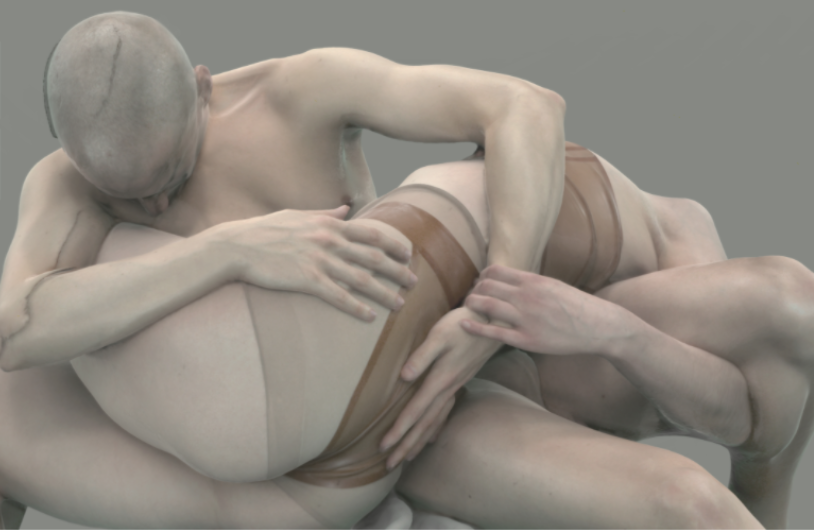
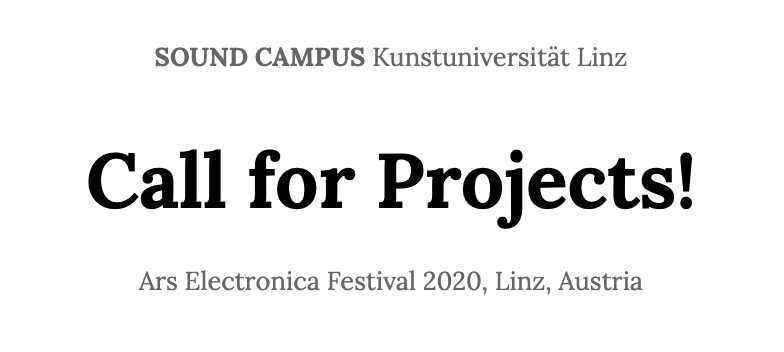
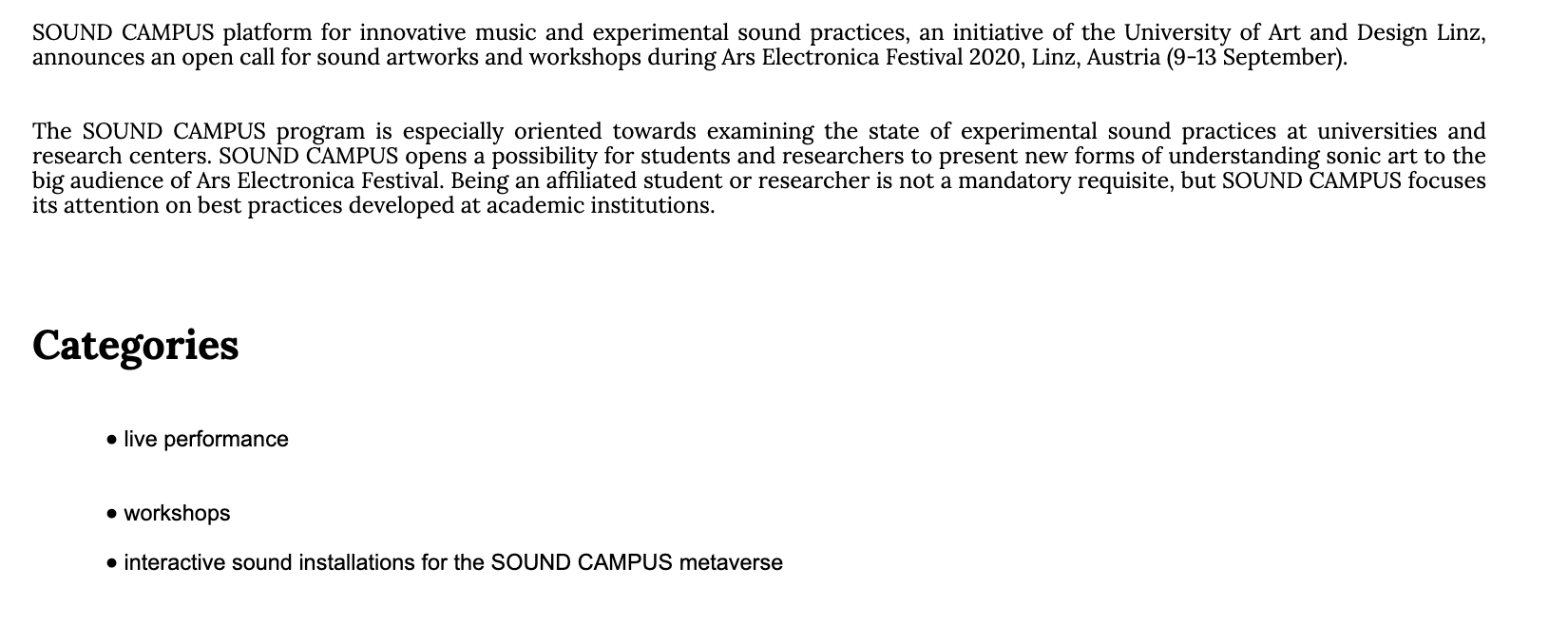
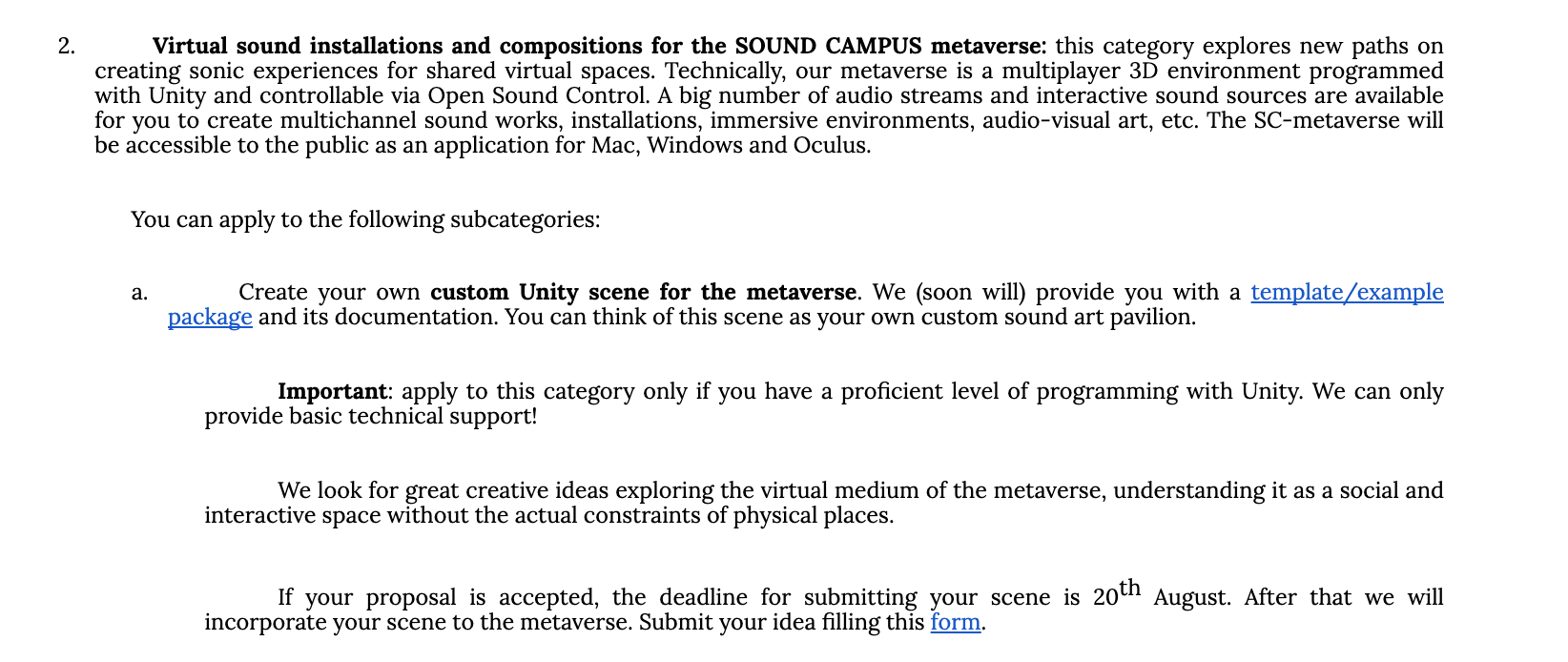
Idee: 'Poesie Machine die immer unterschiedliche Pausen macht'
Because what am I interested in: in a nutshell: I am fascinated by how rhythm is created through specific breaks. How words are pushed together, how cognition/understanding by the audience is 'less' important than the musical rhythm the words create.
> emphasis of intonation
> option: frage aus statements in dem man die Sprachmelodie ändert
> ich muss vlt. garnicht das Gedicht an sich benutzen sondern den text analysieren - Malina's spoken word style herausfiltern - den Stil kopieren > & generatives sound performance daraus machen sodass das Gleiche immer wieder anders vorgetragen wird > immer wieder anders abläuft
Malina's performance, ihre Sätze, arbeiten bewusst auf die Pausen hin
> code /data patch was sich auf die Pausen konzentriert / diese dedecktiert/ Algorithmus schaut nach Pausen > in pure data indem ich auf die Lautstärke schaue - muss dem program sagen 'wenn es so lange so laut ist dann ...' > kann einen 'Randomizer' einsetzten der die Pausen Dauer verändert, sodass die performance durch den code jedesmal leicht anders ist
Die Frage ist: welchen Psychologischen Effekt haben diese Pausen?
Ich könnte auch mit der Computerstimme arbeiten die in dem Computer terminal ist & dieses Abrufen und nur die text file in Pure Data rein tuen aber ich denke es ist schöner/ interresanter wenn das 'Front-end' menschliche Stimme ist & das 'Back-end' der computer - sodass es nicht offensichtlich ist & das Gedicht, welcher durch Malina's Stimme lebt noch 'intakt' bleibt.
Das ganze mit Pure Data um zusetzten - also generativen sound zumachen hat einen anderen wert da es jedesmal anders klingen wird & nicht das simple abspielen einer sound file ist- die stärke der programmierten Herangehensweise ist das es 'lebt' - es ist unerwartet das es nicht genauso wiederholt wird - die Pausen wären variable & 'Live'
ENV tilde schaut nach Lautstärke
+ wie lang ist die Lautstärke bei bestimmten interval > dann soll ... passieren
resize - um das array länger zumachen
soundfiler > array > rename 'sprache'
start und stop Knopf einbauen in PD
Notes from Consultation
The visual:
> probier 'meshmixer' wie knette - Sculpt > prototyping tool
> verschiedene Objekte und Skulpturen
> idee > text geht ein Sprecher weiter nach jeder pause (aber 'added' dies wirklich etwas?)
> probiers einfach auch: (mach fuss & hup Geräusche in Unity aus & lauf rum & schau es dir an wies in dem Raum wirkt)
> richte den virtuellen Raum ein wie ein Kurator
mps to wave oder aiff > quicktime > rechts click > wave
programme: 'Audacity' oder Adobe sound Bearbeitung -'audition' - damit kann ich Raumgeräusche rausfiltern
To test on Oculus Go: Unity build for Oculus Go > Android build
> developer account for Oculus > Android ID file transfer
Tutorial: Advanced Audio with [tabread4~] by cheetomoskeeto
SDK Platform for Andriod developer Oculus go - mac : https://developer.android.com/studio/releases/platform-tools
Developing for the Oculus Go with Unity on Mac: https://dev.to/nitricware/developing-for-the-oculus-go-with-unity-on-mac-1f8c
Neologismen und verschobenes Verständnis
(durch Sprachpausen und Intonation)
Neologisms and shifted understanding/cognition/perception
(via breaks and intonation)
It would be about really putting a focus on the breaks as a 'gestaltungs element' because I almost feel that the way it is performed, the intonation and breaks is just as important if not even more than the words themselves, because the way it is spoken / pronounced/ emphasises defines/controls/determines HOW and IF what is being said in understood - how it is heard. Spoken word ( in Malina's case) to me feels almost more like listening to something pleasing and grabbling to understand than fully following what is being said. The moment of silence, the void, the latent space it defines the piece as much as the spoken moments do - I want to play with those paused moments and variate them through code that generates a always changing performance - just as a poet could never perform their piece exactly the same twice.
The reason why Kevin Bray's stuff works is because it is set in a real world environment - the edited in elements are interesting because they are set in a otherwise 'normal' world.
I really like the idea of having a real life space - maybe a room in 360 in which the evening light changes - giving space to the full power of the spoken word and maybe some elements composeted into it..
could I build a room in C4D and 360° film it ?
Maybe I need to start from the question when I listen to a poem where do I want to be?
Or the question - when I enter VR where do I want to be?
I know that all the VR that felt 'spacial' left more of an impression on me.
I think to listen to a poem I would like to enter a room & it might be interesting for that room to change slightly over the course of the experience.
But basing it truly on where I would like to experience it , it would be a real space, an atmospheric space - not a surrealistic void.
I don't want to try out things aimlessly in Unity - I want to have a plan and I want to create something of high quality.
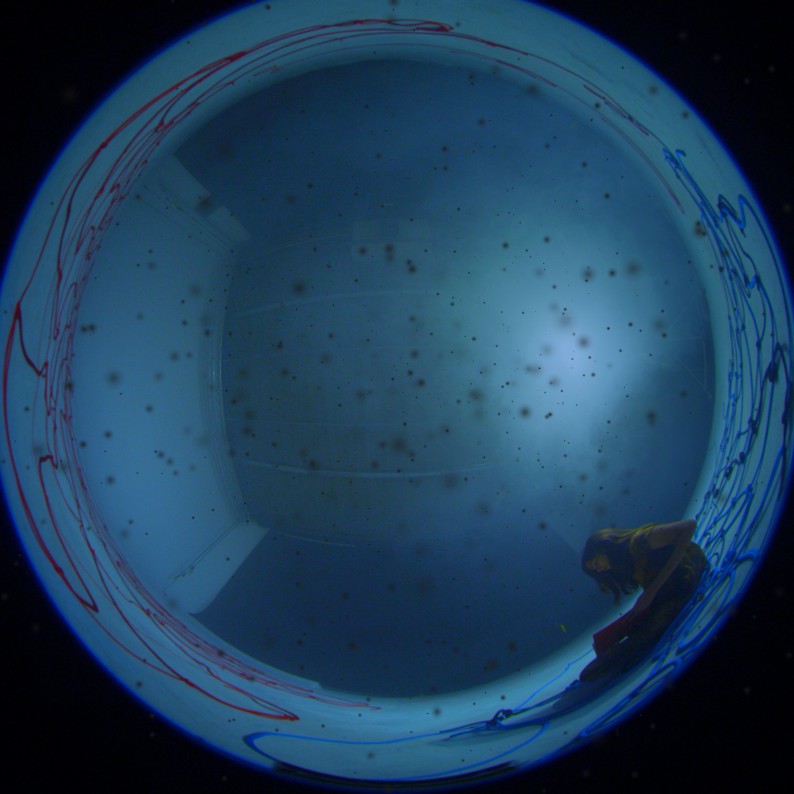
To focus on these words and attribute them so much meaning feels wrong - it feels like this poem is very intimate, like you are peering into someone's mind & sole so the visual should give you a similarly intimate feeling. I would want it to feel very raw and real and not abstract or surrealist. Because any surrealistic element would just distract from the essence of the spoken word. I want the listener to really engage with what they are hearing and create a secluded place dedicated to that.
Funny to be thinking about space in such a reduced - yet narrative way and to the find this.
I feel like I can't make any real decisions of where to go with this piece until I know Malina's intentions
I like the idea of a very intimate setting. Something very raw - like the end of a party or the end of
a relationship or the end of a time , as seen in an empty room of an apartment. The evening light, that casts a warm but sentimental glow on the setting.
The raw intimacy of worn clothing or an old stained mattress.
Maybe it doesn't have to be limited to here - maybe I film somewhere - someone in Berlin or Cologne?
*Also if I create this space myself and film it I can place things in the room that correspond to the poem.
The poem is already so much that I don't want to distract from it - I want to create a space where it can live.
From the sound perspective it's less about the words or their meaning for me. I want to abstract my method from this specific poem. Rather I want to analyse 'how do intonation and strategic breaks give life to spoken word poetry performance?' 'How do these spoken elements influence understanding?'
& question these things through code - so instead of a poet performing their piece ad infinitum a code/algorithm detects the pauses and plays with them, extends them, shortens them - creating a generative sound performance that is always slightly changing, never exactly the same - playing with 'the spoken word' as it gives life to the written words.
Also, the original idea came from wanting to create something that feels REAL AND TANGIBLE - this would be following that same goal only in a very different method, that requires more production, but strategic production in this case is better than just doodling around I think.
Because: what is 'twist' about - it's an intimate conversation between two people about emotions and mental state. This requires an intimate setting to give space to the words.
VISUAL:
Playing with intimate space
and 'twisting it'
( *space for listening, no distractions)
SOUND:
Pauses and intonation how they play with rhythm and understanding
> exaggerated and re-performed by an algorithm 'ad infinitum'
What is your intention when performing a poetry piece? Is the (sonic) experience of listening/hearing central or is it important that the audience leaves having understood exactly what the poem is about?
Is it more about creating a feeling, like a memory fragment, triggering some emotion or about communicating a narrative?
How does spoken performance relate to these (either intentions)?
How do you see the relation between the written poem and the spoken word?
How do you perform spoken word? Are all shifts in tempo, pauses, intonations fully planned? Or will a performance vary each time? How do you write this down/ how is it visible in your written form?
What is your intention with the way words are separated and pushed together?
Is it your intention to create almost neologisms of sound words and obstruct their meaning in this way to a degree?
What is the importance of rhythm created through tempo (e.g. speeding up) and breaks?
Intentionally flat/mundane baseline that highlights emphasis on specific words?
What is 'twist' about?
A relationship? a mental state?
Isen‘t poetry as much about how the words are spoken and heard as it is about the words themselves?
Questions for Malina
I'm interested in the idea of 'sound-words'
the 'who' is speaking can be made more noticeable through slight differences in pitch
Playing the poem via PD Malina's voice is distorted and lower than the original
Also I need to add a 'stop' button
Trying to implement this tutorial with tabread4 there are some crazy sound coming from my laptop, it sounds like a growling animal is stuck inside..
the aim:
I want something that detects the pauses and randomises them
I want to identify the parts with altered tempo and randomise their speed
I want to identify the words with unique pitch and emphasise them
user: listening
generative spoken word poetry - slightly different every time
interaction with the space - none, purely visual
no- I don't think so
Drift 4 - Malina Heinemann
Full disclaimer: beginner
Slightly different set up - same problem - instead if I use openpanel and select it through the GUI that works
I figured out why the last time I tried to follow the tutorial the sound sounded so crazy - I was missing a 0 on the expr 44100/ $f1 object
- as it is seen now it works!
Now I can play it and stop it and make it faster.
The audio file loops by itself but the H slider isen't showing the length correctly.(*edit : fixed this by setting properties to 0-1 and width 195 to fit array)
If I want to get the whole file in I have to make more arrays?
First step: playing back the audio
Second step: getting the entire poem in
Third step: identifying the breaks - via pitch?
Fourth step: randomise those breaks
This is essentially the same set-up but to influence/play with the pitch
+ the smaller I make the range on the H-slider the more control I have over the speed
from this exercise I would conclude that speed and pitch correlate - the slower the deeper the voice and reverse.
http://acoustic.space.re-lab.net/tilman.php
sound and poems and objects ...
sound algorithm real life connections
Through the course of the poem - the light wanders through the room and once the room is dark the morphing light sculpture forms an entity in the space.
"Arrays können so groß sein wie es dein Speicher erlaubt. Aber ab 380 Sekunden bei 44100 Hz wird es anfangen komisch zu klingen. D.h. eine Größe des Arrays von 16777216."
>> bedeutet max 6 Minuten 30 Sekunden.
Ggf. auf SeaM Liste (wo finde ich die?) jmd. für PD Kollaboration anfragen ?
Conversation with Malina
For the Ars Proposal 25th Deadline we will use 'twist' but it might also be an option to use another poem in future, developing collaboration. I've sent the poem as PDF and the performance video of youtube as part of the proposal.
Generally Malina's artistic conception of a poetry piece is that it functions as the 'base' and each performance is a variation, a 'Splinter'/'Splitter'. 'twist' as performed at 'drift' is exactly that, specific to that time and place, she read it twice and the second time she left out the first verses - turning it into a performance of the poem specifically at this event and this poem and performance can change and evolve.
Generally Malina works a lot with repetition both in the writing itself, the same words, phrases, sentence parts but also very much with re-reading, to read it several times - even in one performance - or over time.
Each time it is changed, it's malleable and there is no hierachry between these pieces, there is no original, they are all equals as they transition and transform from - to- within oneanother.
Personal note: this was also great to find out because her artistic approach fits very well with what the algorithm would do - more so it EXACTLY extends her practice of creating variations and working with repetition and creating 'splitters'- so much so that it might be an idea to PUSH THE RANDOMISATION EVEN FURTHER ? and move further from the written base?
This also means she would be open to shortening it if we stick with it!
Also she immediately offered that she would re-perform and re-record it.
Also she was very excited about the idea of placing the poem within the space - this was something she wants to think about for the re-recording, meaning she would ESPECIALLY PERFORM THE POEM FOR THE VR PIECE and play with dividing the voices in her reading. /She will sort the poem in space in the written and reading recording.
She also spoke about playing even more with breaks and silence, making it more abrupt in the tempo, quicker, while still staying in the rhythm and this is exactly what I purposed to exaggerate and do with the algorithm so I am happy she liked this idea in dealing with the poem so much she would already incorporate it into her performance, for it then to be picked up by the Data Patch.
+ this will be a clearer recording to work with and Identify the breaks.
Personal note: what I really enjoyed about out conversation was that she made me feel like the project has value and can really become something unique - which is also scary because I don't want to disappoint - but I think together we can really push it to be something unique and special.
In her artistic practice she will sometimes hear it as a rhythm in her head and then start writing from there.
What do we need as next steps:
Decide on the poem - twist, since it is the proposal I sent
Malina would need to re-perform and record
In the mean time I can do my own test recording which I can use as a cleaner sample and work on the Data patch with this already.
She wanted to have me send her some more information on VR but instead I explained it as best I could, the possibilities - but I can /SHOULD send her a link to Radiance VR!!!!
I need to write down the commands I need the algorithm to do and I need to start finding the objects to do it.
Also I should think about the 'algorithmic art presentation' and how this relates to my project and if I want to have the algorithmic component manifest not only in the back-end but be made visible somehow ,maybe in the VR ? maybe as an additional physical object?
Between reading and writing voice/poem form:
Theres is an interconnectedness - both reading and writing, network created in between them - it can be very splittered but there are always connections because base is stable.
In a way she is already using the words/written poem as an algorithm. This VR work would take the poem and let it appear again as a new 'splitter' in a new context. She would like to add this to the multiple versions!
After our conversation I now feel that feeling vs. comprehension are not the right categories to define the poets intention in, rather I think it is a medium for expression, a way to perceive and process and express the world and that the comprehension lies mostly with the poet, whom is the only one who understands the depths of their words and of course you want someone to understand what you are expressing but the core importance is expressing it and letting people take from it what they will.
Good that we talked because her perspective, wishes were much more fitting and different from what I had in mind.
Above all the feeling should NOT be of intimacy, no comforting light. She also didn't like specifically for instance the flowers/plants in the room, that made it feel 'too cozy', like someone was there. Rather it was important to her that if there be a room you don't know where this room is. We talked about the idea of feeling confused, lost:
The characters are not set, they are traveling through these foldings, bends - there is a dialogue and a positioning between each other - there is a search for were to belong, for one's own space - the character doesn't know where she stands. It's a back and forth - there is no line of 'getting better' but a tug of war in oneself. It's also left unclear whether it's a monologue or a dialogue.
When she thinks of imagery: GOING FROM BLURRY TO SHARP , a close up of asphalt as it has it's own landscape and foldings and bends and angels - you could pierce through
The VR as immersion is almost like a dream state? or rather it shouldn't be like a game where you get excited and have to do something but it should be a bodily, visceral experience because in her work it's also very much about the body.
She also started considering how the body, something sensual, feeling of physicality could be in the work, in the materials, or in seeing ones own hands. Because she also writes about ability to feel physically - embodiment approach (< general aspect of her artistic practice and creative thinking.) (Although I would say having a body in the space is not so important, rather 'was bodiless')
CLEAR VS. BLURRY BACK AND FORTH - FALLING THROUGH DIFFERENT FOLDINGS
Notably the metaphorical or visual references the poem pulls are all of an EXTERIOR SPACE! / all spatial references are external but they are talking of an internal turmoil/space.
The street as a metaphor, a public space - what Malina is thinking about with this metaphor is the foldings in space; the differences between the dry pavement where cars drive and the sidewalk where people walk, different tempos, speeds of going through life, at angles to each other clearly defined in space and separated they are common, regulated, there are boundaries between them,SPACE OF SEPARATION.
If anything it is more about privat not intimacy, emptiness could work but it should be uncomfortable, like if it is a kitchen that kitchen should be slightly dingy but not crammed with objects to a degree where those objects start telling their own story. If it's a kitchen it should be discomfort, falling apart, untidy, unharmonious - NO COMFORTING LIGHT! rather cold and bare.
INTIMATE, STRESSFUL, CONFUSION, FEAR, UNCOMFORTABLE, NOT KNOWING WHERE YOU ARE
We also spoke about being too literal and that the words function as abstracted ideas of the thing they are referencing, and also not for instance the generic idea of a street but the analysed components of it. Street as metaphor.
Also when working at this intersection of words (mental images) and actual 2D images to be aware that they spread and unfold and manifest differently, one involves the viewers imagination, the other does not and by being to literal the magic of the word and mental image evaporates.
Also the visuals/imagery in the poem is not observatory descriptions or narration, it's about just the words, they provoke a visual but it's very subtle. The narration is minor and fragmented , the characters or selves are appearing but not described.
Practical issues:
Thoughts on the space:
Questions we could still cover:
Poetry as a medium - intention/What you seek to communicate; feeling vs. comprehension
your(writing) voice as a poet and the importance of HOW it is said, the process of finding that rhythm - is it specific to the poem or the poet?
Hoe does the spoken word relate to the written poem?
No direct translation of the words ( if then rather materiality)
not knowing where you are - not much information
not comfortable, very general, no hints of location! nothing indicative of Berlin for instance!
silent
deceived
secretive
The body and foldings in space -
the exterior and interior space
Create a transition between the exterior and interior
Create facade like foldings that collapse - add physics to planes
transitioning between the spaces that are twisted into each other,
along the edges
the whole environment as a type of collage that isen't glued in the right way?
Seeing it from below
being pushed through it by the camera
EDGES !
FOLDINGS!
Body-Architecture mesh with very clear angular parts and more photogrammetric parts
Meshmixer ? the bodies and the landscape together ...
scanning people's bodies?
photographing people's mouths
a meshfabric that blends together body as fabric
intimacy becomes the body instead of a space that feels intimate
the street becomes a metaphor- a transitory non-space between interior and exterior foldings
the visual experience becomes about exploring the body-street-landscape
compositing/collaging the landscape together in 'not the right way' = "it's not glued in the right way"
tongue-mouth-narrowness
finger-hand-fragmentation
mind-street-realisation
abstract terrain between body (mouth, hands, foldings, bends) and street (surface, cracks, angles)
Mood/atmospher, cool, cold, disorienting, unsetteling
Template instructions link: https://docs.google.com/document/d/e/2PACX-1vT5e5h2sBbrXin_buxQijjSL0bGQwHYd92KtiWR_-g6HZ8H1KdH-NibNmu93gCoyJgZUx0QG9E97Mei/pub
Also: By using only one body it will be closer to the meaning of the poem, not about sexuality or romantic tension or touch but 'twist', confusion, distortion and also further differentiate from Enesgus&Evelyn's work.
However, from practical perspective certain shapes only become possible through two bodies.
Unsurprisingly, my proposal was NOT selected for Ars Electronica which is a relief; but also thankful that the open call, called this project into being and pushed me to reach out to Malina!
& really great that I now don't have a deadline or pressure to make sure it works